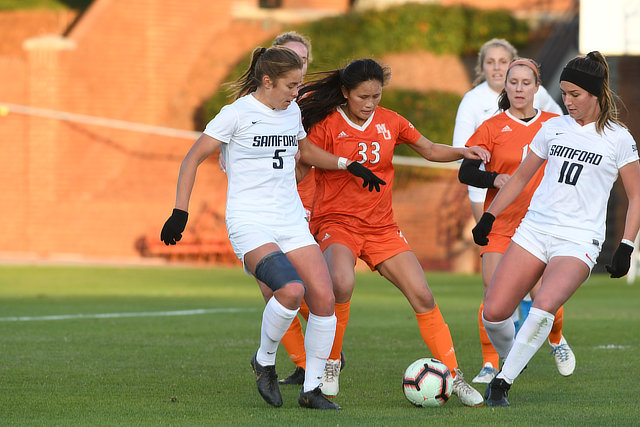
Ever since Billy Bean released the book Moneyball, sports analytics have significantly grown across the big three American sports of football, baseball and basketball. Soccer coaches, on the other hand, have been slower to accept analytics in part because of the fluid nature of soccer that makes it the “beautiful game” and much more difficult to measure. Whereas a baseball game is a series of hundreds of discrete measurable events which can be dissected and correlated with success, soccer is a sport that can be played successfully in a seemingly infinite number of ways (and each way has its own key traits for success). According to Jake Wallerius, soccer is the last frontier of sports analytics because “soccer is low-scoring, fluid, (and) recordable actions are relatively scarce.”
Charles Reep is credited as being one of the early pioneers of soccer analytics back in the 1950s when he collected basic data by hand and determined, “the key to scoring goals and winning games was to transfer the ball as quickly as possible from back to front.”
Basic statistics such as pass counts, pass completions, and time of possession have only been measured since the 1990s. These statistics are insightful but the physical aspects of the game such as distance covered, intensity, number of accelerations and decelerations have been found to be highly relevant in helping determine a player’s probability of success on the pitch.
Over the last few years there has been a major shift in the development and acceptance of analytics in the world of soccer. New systems have been adapted to track the physical aspects of the game that allow for a reduction in injury and higher levels of efficiency on the field. This is a result of the ability to accurately track an individual’s ability to exert energy and recover during and after a performance.
From a recruiting and coaching standpoint, the eye-test has always been the most important factor when looking at any player on the pitch. However, with the rapid increase of analytical use in many other sports, soccer coaches and recruiters are now using analytics more than ever to analyze a player’s performance and potential.
Throughout this blog post, I will present 15 of the most relevant analytic topics for soccer which will include articles, videos, and analytical systems. From the history of soccer analytics to the potential to analyze everything on the field, there is no denying soccer analytics has evolved and will change the game forever.
- Most Advanced Metrics in Soccer
- MLS partnership with Stats Perform
- A New Soccer Statistic Tries to Place a Value on the Invaluable
- Team Expected Goals
- Player Expected Goals
- Goalkeeper Expected Goals
- Expected Assists
- Possession Value [Link broken as of 2/1/22]
- Defensive Actions
- Passing Ability
- Game Stats
- Visualizations [Link broken as of 8/23/21]
- The Power of Opta
- Player tracking in the MLS
- More Advanced Stats
About the Author
Grace Sommi is a Senior Marketing and Management double major with a Sports Marketing Concentration from Knoxville, Tenn. She also plays soccer at Samford and plans to return to Samford next year to pursue her Sports Business MBA and use her last year of eligibility.
Sources
Arastey, G. (2019, November 27). History Of Performance Analysis: The Controversial Pioneer Charles Reep. Retrieved December 02, 2020, from https://www.sportperformanceanalysis.com/article/history-of-performance-analysis-the-controversial-pioneer-charles-reep
Minkus, Kevin. (2020). Soccer Analysis 101. Retrieved December 02, 2020 from https://www.mlssoccer.com/soccer-analytics-guide/2020/soccer-analytics-101#:~:text=Where%20analytics%20are%20headed,suggested%20by%20looking%20at%20data. [Link broken as of April 6, 2021]
Turgelis, A. (2018, March 25). An xGuide to Soccer Analytics. Retrieved December 02, 2020, from https://www.qsao-queens.com/content/an-xguide-to-soccer-analytics
